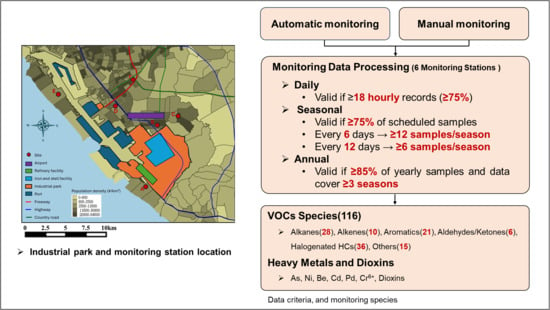-
 Quantification of the Spatial Heterogeneity of PM2.5 to Support the Evaluation of Low-Cost Sensors: A Long-Term Urban Case Study
Quantification of the Spatial Heterogeneity of PM2.5 to Support the Evaluation of Low-Cost Sensors: A Long-Term Urban Case Study -
 On the Quasi-Steady Vorticity Balance in the Mature Stage of Hurricane Irma (2017)
On the Quasi-Steady Vorticity Balance in the Mature Stage of Hurricane Irma (2017) -
 New Oxidation Mechanism for Sulfur Dioxide
New Oxidation Mechanism for Sulfur Dioxide -
 Systematic Review of Prenatal Exposure to PM2.5 and Its Chemical Components and Their Effects on Neurodevelopmental Outcomes in Neonates
Systematic Review of Prenatal Exposure to PM2.5 and Its Chemical Components and Their Effects on Neurodevelopmental Outcomes in Neonates -
 Expanding Continuous Carbon Isotope Measurements of CO2 and CH4 in the Italian ICOS Atmospheric Consortium: First Results from the Continental POT Station in Potenza (Basilicata)
Expanding Continuous Carbon Isotope Measurements of CO2 and CH4 in the Italian ICOS Atmospheric Consortium: First Results from the Continental POT Station in Potenza (Basilicata)
Journal Description
Atmosphere
- Open Access— free for readers, with article processing charges (APC) paid by authors or their institutions.
- High Visibility: indexed within Scopus, SCIE (Web of Science), Ei Compendex, GEOBASE, GeoRef, Inspec, CAPlus / SciFinder, Astrophysics Data System, and other databases.
- Journal Rank: CiteScore - Q2 (Environmental Science (miscellaneous))
- Rapid Publication: manuscripts are peer-reviewed and a first decision is provided to authors approximately 16.9 days after submission; acceptance to publication is undertaken in 2.9 days (median values for papers published in this journal in the first half of 2025).
- Recognition of Reviewers: reviewers who provide timely, thorough peer-review reports receive vouchers entitling them to a discount on the APC of their next publication in any MDPI journal, in appreciation of the work done.
- Testimonials: See what our editors and authors say about Atmosphere.
- Companion journals for Atmosphere include: Meteorology and Aerobiology.
Latest Articles
E-Mail Alert
News
Topics
Deadline: 31 December 2025
Deadline: 31 January 2026
Deadline: 28 February 2026
Deadline: 31 March 2026
Conferences
Special Issues
Deadline: 9 December 2025
Deadline: 10 December 2025
Deadline: 12 December 2025
Deadline: 15 December 2025
























